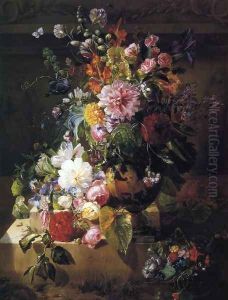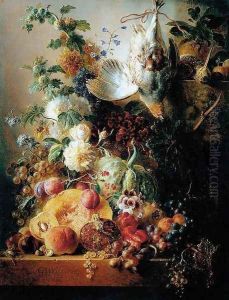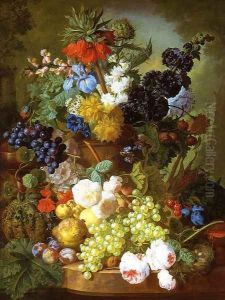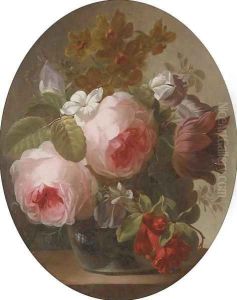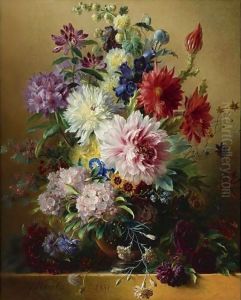Georgius van Os Paintings
Georgius Jacobus Johannes van Os, born on April 20, 1782, in The Hague, Netherlands, was a distinguished 19th-century Dutch painter known for his exquisite still life compositions and occasional landscape paintings. He was the son of Jan van Os, who was also a notable artist of his time, specializing in floral still lifes and marine subjects. This artistic environment at home provided Georgius with early exposure to the world of art and undoubtedly influenced his career choice.
Trained by his father, Georgius honed his skill in capturing the delicate interplay of light and texture, which became a hallmark of his work. He moved to Paris in 1826, where he was influenced by French artistic circles and the work of contemporary still life painters. His paintings often featured lush floral arrangements, fruits, and sometimes dead game, rendered with high precision and a rich palette reflecting the Romantic period's sensibilities.
Van Os’s work was well-received, and he exhibited at the Paris Salon, where he won medals in 1833 and 1839. His pieces are characterized by a masterful use of color and a refined attention to detail. Georgius managed to infuse a sense of vitality and opulence in his still lifes that went beyond mere imitation of nature, which resonated with art collectors and enthusiasts of the time.
His artistic legacy was carried on by his son, Pieter Georgius van Os, who also became an accomplished painter. Georgius van Os's works are now part of collections in many prominent museums, reflecting his enduring appeal and the high regard in which his art is still held. He passed away on July 24, 1861, in Paris, leaving behind a body of work that continues to be celebrated for its beauty and technical prowess.
